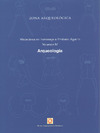Identificador persistente para citar o vincular este elemento:
https://accedacris.ulpgc.es/handle/10553/1806
| Campo DC | Valor | idioma |
|---|---|---|
| dc.contributor.author | Rodríguez Ruiz, Patricia | en_US |
| dc.contributor.author | Rodriguez-Badiola, Eduardo | en_US |
| dc.contributor.author | Carracedo Gomez, Juan Carlos | en_US |
| dc.contributor.author | Guillou, Hervé | en_US |
| dc.contributor.author | Perez-Torrado, Francisco-Jose | en_US |
| dc.contributor.other | Facultad de Ciencias del Mar | - |
| dc.contributor.other | Departamento de Física | - |
| dc.date.accessioned | 2009-10-08T02:31:00Z | - |
| dc.date.accessioned | 2018-03-07T09:01:50Z | - |
| dc.date.available | 2018-03-07T09:01:50Z | - |
| dc.date.issued | 2004 | en_US |
| dc.identifier.isbn | 8445126520 | en_US |
| dc.identifier.other | 1697 | - |
| dc.identifier.uri | https://accedacris.ulpgc.es/handle/10553/1806 | - |
| dc.description.abstract | La necrópolis de La Cucaracha es uno de los enterramientos con restos arqueológicos y humanos más representativos de la población aborigen prehispánica de La Palma (benahoaritas), situada en el flanco del cono estromboliano de la Montaña La Cucaracha, localizada en la vertiente meridional de la dorsal de Cumbre Vieja. La gran profusión de restos arqueológicos –fragmentos de cerámica, industria lítica y restos humanos procedentes de enterramientos y otros ritos funerarios– justifican por sí mismos la importancia del yacimiento, pero es la presencia excepcional de restos óseos humanos englobados en escorias volcánicas lo que le confiere mayor interés. La datación radiométrica por 14C de los huesos en 1090 ± 50 años junto al estudio petrográfico y geoquímico comparativo de las escorias que engloban los huesos con los materiales volcánicos procedentes de las erupciones prehistóricas de Cumbre Vieja, señalan al volcán Montaña Goteras –centro eruptivo basáltico inicialmente hidroexplosivo que evolucionó posteriormente a estromboliano– como la erupción que probablemente originó víctimas humanas en relación con las explosiones freatomagmáticas. La incidencia de la actividad volcánica histórica y prehistórica de la dorsal de Cumbre Vieja es bien conocida por sus relaciones con otros importantes yacimientos arqueológicos de la isla de La Palma. | en_US |
| dc.description.abstract | An important burial ground of archaeological and human remains of the aboriginal pre-Hispanic population of La Palma –the benahoaritas– has been found in a cavity excavated in the flank of a strombolian cone (Mña. La Cucaracha), located on the eastern slope of the Cumbre Vieja rift. Abundant pieces of pottery and stone hand tools have been unearthed, although the most significant finding is the presence of human bone fragments embedded in volcanic scoria. Carbon-14 analysis of the bones dated the eruption in 1090 ± 50 years and cross-comparison of the petrographic and geochemical data from the volcanic scoria containing human bones with the prehistoric eruptions of Cumbre Vieja pointed to a nearby recent vent (Mña. Goteras) –an initially hydroexplosive basaltic eruptive vent that later evolved to strombolian– as the eruption probably causing the victims. The pre-Hispanic and historic eruptions of the Cumbre Vieja rift can often be related to important archaeological sites in La Palma. | en_US |
| dc.language | spa | en_US |
| dc.source | Miscelánea en homenaje a Emiliano Aguirre. Arqueología. v. IV, pp. 452-463 | en_US |
| dc.subject | 25 Ciencias de la tierra y del espacio | en_US |
| dc.subject.other | Volcanismo | en_US |
| dc.subject.other | Canarias | en_US |
| dc.subject.other | La Palma | en_US |
| dc.subject.other | Erupciones prehistóricas | en_US |
| dc.subject.other | Geoquímica | en_US |
| dc.subject.other | Aborígenes benahoaritas | en_US |
| dc.title | Yacimiento arqueológico de la necrópolis de La Cucaracha, Mazo, La Palma (Islas Canarias) | en_US |
| dc.type | info:eu-repo/semantics/bookPart | en_US |
| dc.type | BookPart | en_US |
| dc.contributor.contentdm | Física-Geología | es |
| dc.contributor.contentdm | Facultad de Ciencias del Mar | es |
| dc.identifier.absysnet | 315654 | - |
| dc.identifier.crisid | 164 | - |
| dc.investigacion | Ciencias | en_US |
| dc.rights.accessrights | info:eu-repo/semantics/openAccess | es |
| dc.type2 | Capítulo de libro | en_US |
| dc.utils.revision | Sí | en_US |
| dc.contributor.wosstandard | Física-Geología | - |
| dc.contributor.wosstandard | Facultad de Ciencias del Mar | - |
| dc.identifier.supplement | 164 | - |
| dc.identifier.ulpgc | Sí | en_US |
| dc.identifier.ulpgc | Sí | en_US |
| dc.identifier.ulpgc | Sí | en_US |
| dc.identifier.ulpgc | Sí | en_US |
| dc.contributor.buulpgc | BU-BAS | en_US |
| dc.contributor.buulpgc | BU-BAS | en_US |
| dc.contributor.buulpgc | BU-BAS | en_US |
| dc.contributor.buulpgc | BU-BAS | en_US |
| item.fulltext | Con texto completo | - |
| item.grantfulltext | open | - |
| crisitem.author.dept | GIR IUNAT: Geología de Terrenos Volcánicos | - |
| crisitem.author.dept | IU de Estudios Ambientales y Recursos Naturales | - |
| crisitem.author.dept | GIR IUNAT: Geología de Terrenos Volcánicos | - |
| crisitem.author.dept | IU de Estudios Ambientales y Recursos Naturales | - |
| crisitem.author.dept | Departamento de Física | - |
| crisitem.author.orcid | 0000-0002-4282-2796 | - |
| crisitem.author.orcid | 0000-0002-4644-0875 | - |
| crisitem.author.parentorg | IU de Estudios Ambientales y Recursos Naturales | - |
| crisitem.author.parentorg | IU de Estudios Ambientales y Recursos Naturales | - |
| crisitem.author.fullName | Carracedo Gómez, Juan Carlos | - |
| crisitem.author.fullName | Guillou ,Hervé | - |
| crisitem.author.fullName | Pérez Torrado, Francisco José | - |
| Colección: | Capítulo de libro | |
Visitas
215
actualizado el 28-dic-2024
Descargas
638
actualizado el 28-dic-2024
Google ScholarTM
Verifica
Altmetric
Comparte
Exporta metadatos
Los elementos en ULPGC accedaCRIS están protegidos por derechos de autor con todos los derechos reservados, a menos que se indique lo contrario.
